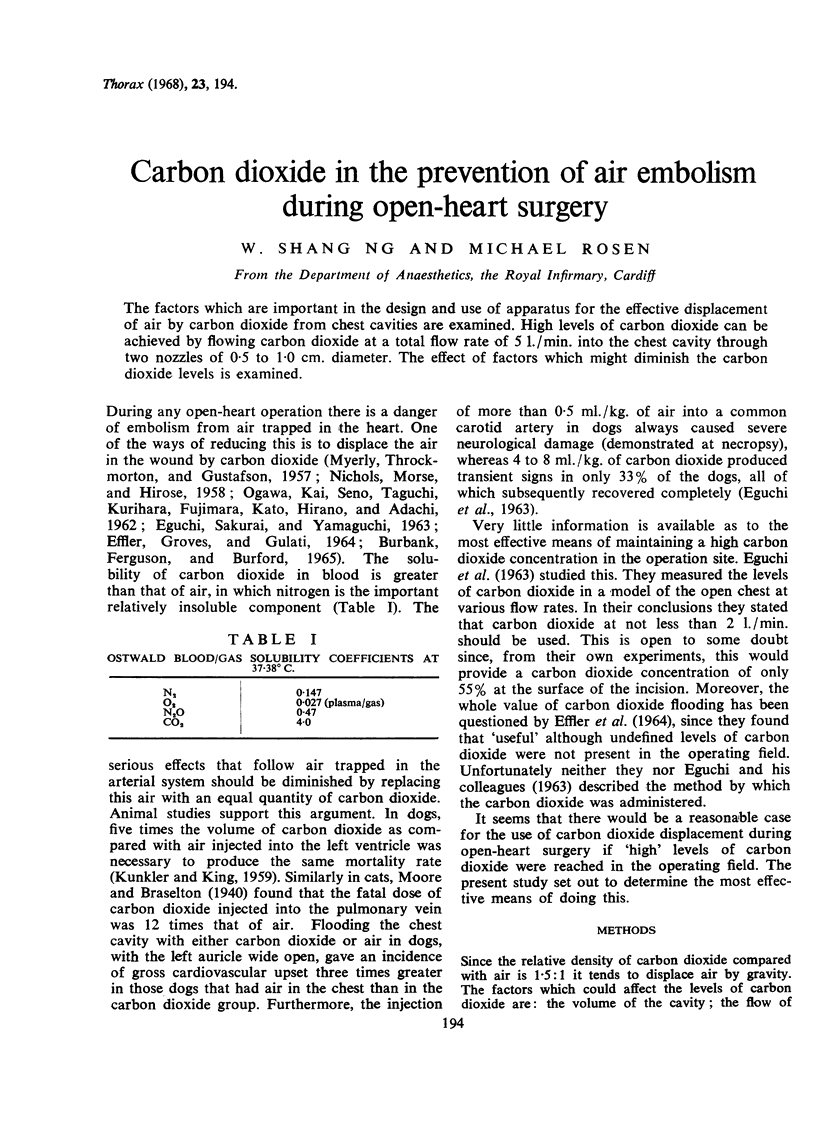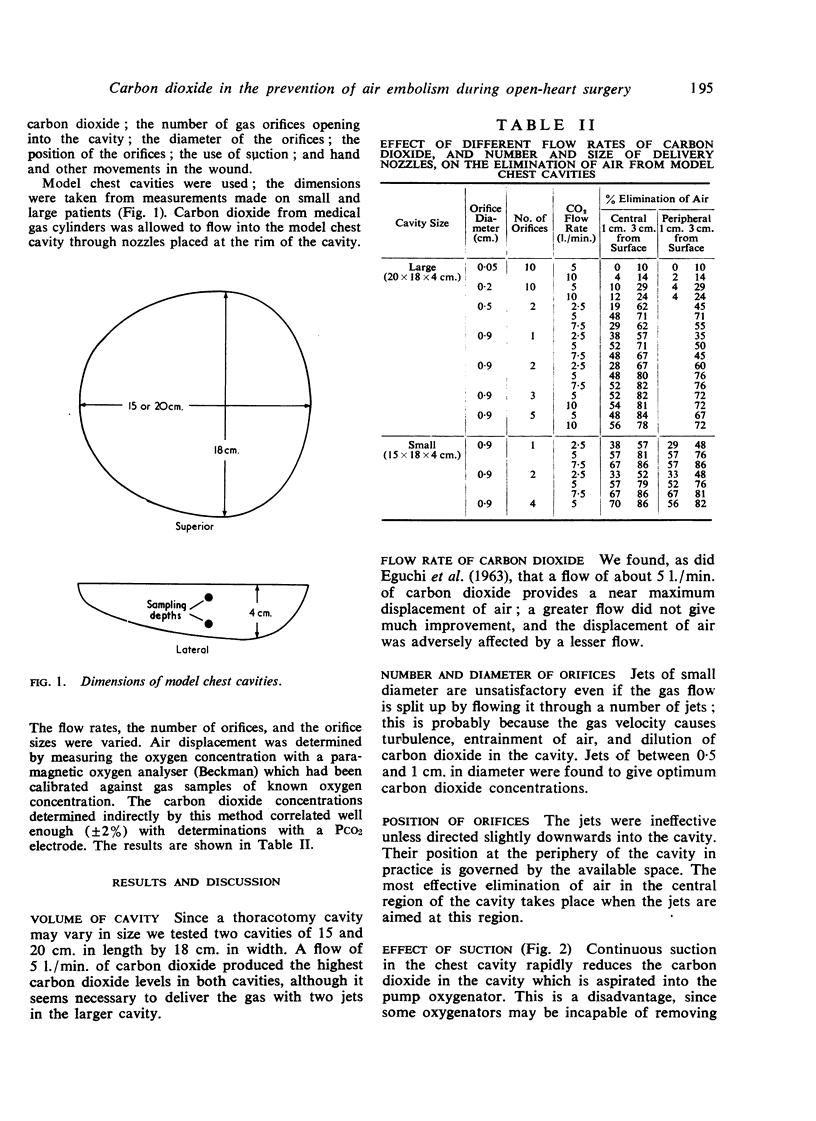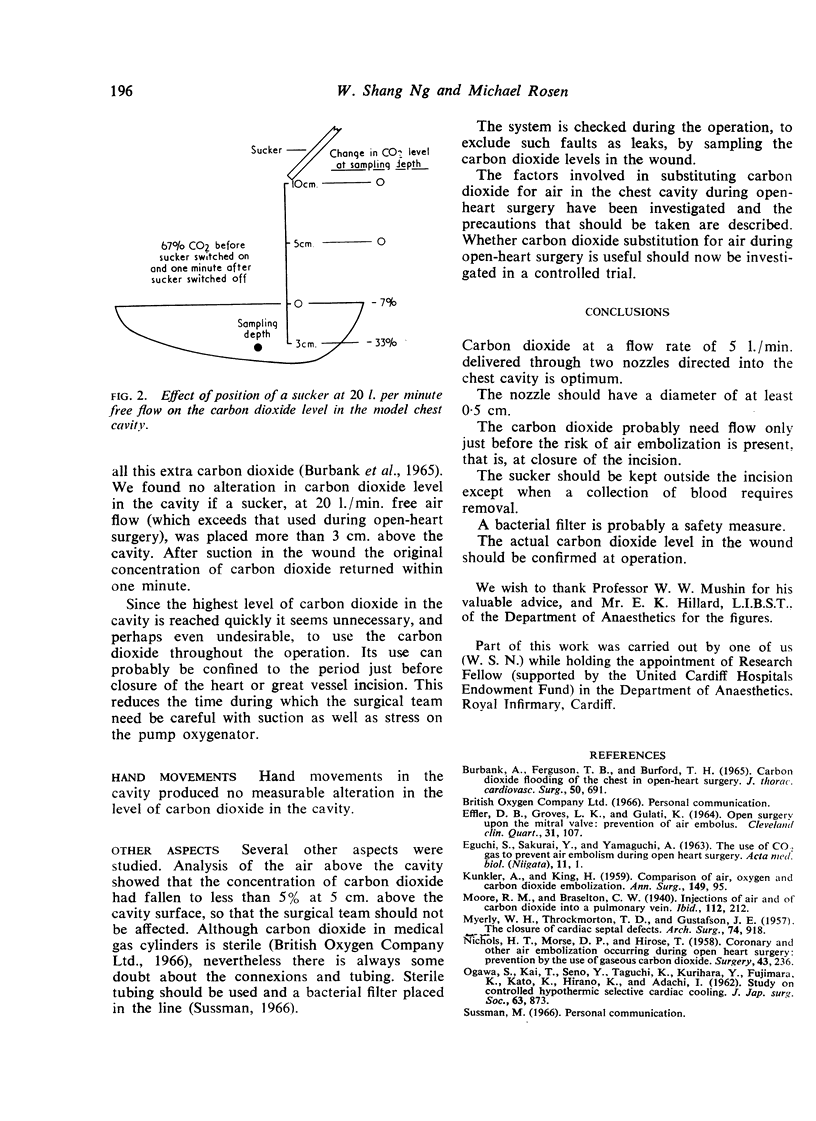Abstract
The factors which are important in the design and use of apparatus for the effective displacement of air by carbon dioxide from chest cavities are examined. High levels of carbon dioxide can be achieved by flowing carbon dioxide at a total flow rate of 51./min. into the chest cavity through two nozzles of 0·5 to 1·0 cm. diameter. The effect of factors which might diminish the carbon dioxide levels is examined.
Full text
PDF


Selected References
These references are in PubMed. This may not be the complete list of references from this article.
- Burbank A., Ferguson T. B., Burford T. H. Carbon dioxide flooding of the chest in open-heart surgery. A potential hazard. J Thorac Cardiovasc Surg. 1965 Nov;50(5):691–698. [PubMed] [Google Scholar]
- EFFLER D. B., GROVES L. K., GULATI K. OPEN SURGERY UPON THE MITRAL VALVE: PREVENTION OF AIR EMBOLUS. Cleve Clin Q. 1964 Apr;31:107–114. doi: 10.3949/ccjm.31.2.107. [DOI] [PubMed] [Google Scholar]
- KUNKLER A., KING H. Comparison of air, oxygen and carbon dioxide embolization. Ann Surg. 1959 Jan;149(1):95–99. doi: 10.1097/00000658-195901000-00012. [DOI] [PMC free article] [PubMed] [Google Scholar]
- MYERLY W. H., THROCKMORTON T. D., GUSTAFSON J. E. The closure of cardiac septal defects; the beginning of by-pass surgery at a medium-sized private hospital. AMA Arch Surg. 1957 Jun;74(6):918–discussion. [PubMed] [Google Scholar]
- Moore R. M., Braselton C. W. INJECTIONS OF AIR AND OF CARBON DIOXIDE INTO A PULMONARY VEIN. Ann Surg. 1940 Aug;112(2):212–218. doi: 10.1097/00000658-194008000-00004. [DOI] [PMC free article] [PubMed] [Google Scholar]
- NICHOLS H. T., MORSE D. P., HIROSE T. Coronary and other air embolization occurring during open cardiac surgery; prevention by the use of gaseous carbon dioxide. Surgery. 1958 Feb;43(2):236–244. [PubMed] [Google Scholar]


